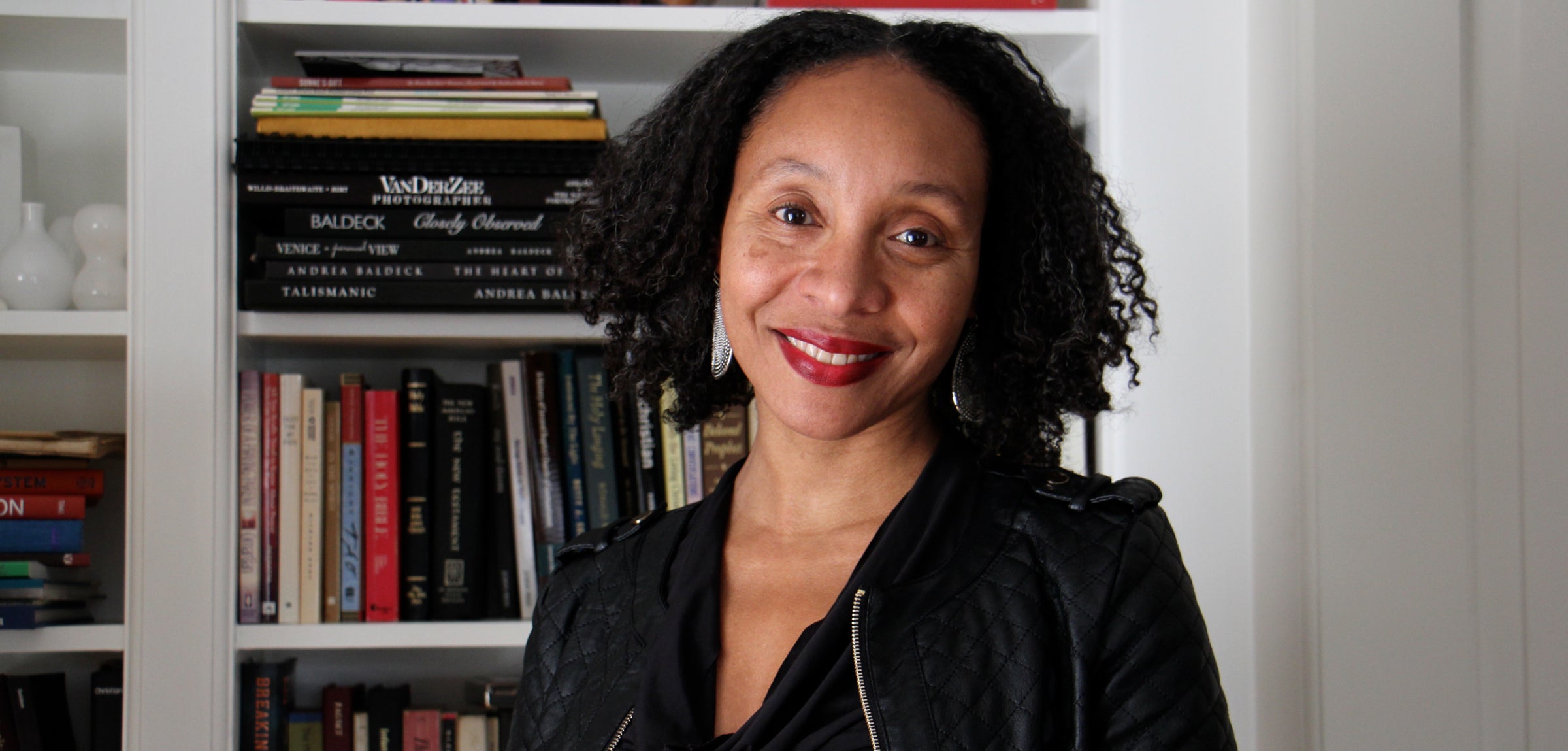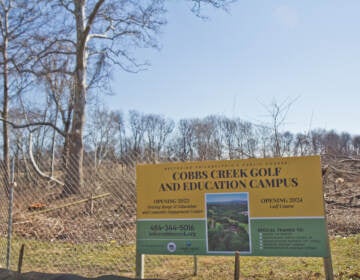Speaking for the public: Natalie Nixon’s emerging voice on the Art Commission

At an Art Commission meeting last November, the assembled appointees were considering a school district proposal to expand the overburdened Mayfair Elementary school in the lower Northeast. There are 1,400 children in an elementary school constructed to accommodate 850, forcing classes to be held in storage rooms, on the stage in the auditorium, and in four trailers—some of which are 20 years old.
After the architects and school officials finished their presentation, the commission’s newest member, design professor Natalie Nixon, asked how much time they’d spent in the classrooms. Not just walking through the building, or taking a quick tour, but actually sitting in the classrooms to experience what the students see. No one had done such a thing. It’s the kind of question Nixon asks of a lot of presenters, bringing a deeply experiential perspective to her project feedback.
The honeycomb mesh on the ground floor windows, meant to prevent break-ins, especially bothered Nixon. She recalled the prison-like effect of similar protective measures in her own classrooms in grade school. “I’m from Philly, I started out in Philadelphia public schools many years ago,” Nixon told the design team. “To my dismay I was also in classrooms with metal grids in the windows. So I have a personal perspective on that, and also as a citizen I would love to understand other alternatives to the honeycomb grid on the windows. What kind of subtle messaging does that send?”
The school district officials pointed out that the honeycomb design is a significant upgrade from the defensive windows that Nixon remembered from her school days, installed to protect against threats of theft and vandalism.
“But there’s a private school in Germantown in the middle of the ‘hood and it has a lot of pricey equipment,” said Nixon, in reference to Germantown Friends School, where she attended middle and high school. “It has a very different architectural feel to this school campus. That’s my reference point.”
After Nixon’s prompt, other Art Commission members voiced similar concerns. Why couldn’t the windows in the cafeteria open, wondered architect Jose Alminana?
As a result of these questions, the Art Commission asked the school district to rework its proposal. In revised plans presented the following month, honeycomb remained, but the paint color around the windows was adjusted so it would blend in more and present less of a stark barrier to the eye. The windows in the cafeteria can now be opened as well.
Since she began her tenure on the Art Commission five months ago, Nixon has been peppering presenters with user-focused questions that showcase her unique perspective as a consumer-minded professional with deep roots in the city.
Nixon was born in East Mt. Airy, has what she calls a “very loopy” background in both anthropology and fashion. She teaches fashion merchandising and management at Philadelphia University where is the founding director of the school’s strategic design program. She occupies one of two Art Commission seats earmarked for academics, the other being held by chairman Alan Greenberger who recommended her for the job. Nixon is also the only African-American who sits on the Art Commission.
The Art Commission is part of the constellation of municipal advisory boards that quietly shape the city’s public environment. It is more venerable than the Zoning Board of Adjustment, the Historical Commission, or the Civic Design Review committee. Born out of the City Beautiful movement of a century ago, the Art Commission emerged in 1911 with the mission “to be helpful to the public in preventing the ugly and creating the beautiful.”
There is steel behind that flowery mission statement. Unlike the Civic Design Review committee, or the larger Planning Commission, the Art Commission actually wields power. Its edicts are binding, not advisory. And the Art Commission’s jurisdiction stretches to every corner of the city, well beyond the museum-studded Benjamin Franklin Parkway and the kinds of grand civic spaces most closely associated with the City Beautiful movement.
In recent months the commission considered big-ticket items downtown like the Holocaust Memorial, and the possibility of billboards on public buildings. But it also considered smaller neighborhood proposals, the types of projects that will only become a greater portion of the Art Commission’s caseload as Mayor Jim Kenney’s $500 million Rebuilding Community Infrastructure Program takes shape.
As a new generation of civic projects flow through the Art Commission, its role in shaping the public realm, helping create beauty, and create quality shared spaces becomes all the more important.
Commission chair Alan Greenberger says he appreciates what Nixon has added to that design dialogue already. “She brings this purposeful interdisciplinary point of view, which can merge a kind of aspirational design sensibility with good solid practical thinking,” he said.
“She understands the kind of issues that people who come in front of the commission have to face,” said Greenberger, who met Nixon when he was deputy mayor for commerce and economic development under Mayor Nutter. “They’ve got design issues, they’ve got economic issues, they’ve got practical issues and she’s got a really unique background that allows her to appreciate that in a heightened way.”
Even beyond the Mayfair case that struck a personal chord, Nixon is one of the people on the commission most likely to ask about the members of the public most likely to be affected.
During the November presentation on a proposal to install advertising on city-owned office buildings, Nixon asked if any of the workers whose windows would be covered by the billboards were being consulted. (They had not been.) At this month’s Art Commission meeting, she asked if the presenter knew the opinion of the one private homeowner whose property abuts a new pedestrian plaza at the mouth of American Street. (They did and the owner is very excited about the project.)
In an interview with PlanPhilly, Nixon said that the projects that come before the Art Commission should be considered experientially. While the commission wields veto power over projects under its purview, very few members of the public are aware that it exists or can take time off on a weekday morning to attend and make their voices heard.
“They [the people making proposals] should really be circling back to the people who are going to be engaged in the parks or the buildings,” said Nixon. “[These questions] shouldn’t only come from members of the audience who have the time to attend, or just those who have an understanding that it’s possible to come to an Art Commission meeting.”
Perhaps the addition of a sprayground to a park or the renovations of a swimming pool don’t have the kind of grandeur that is associated with the City Beautiful movement or the Art Commission. But these projects can help beautify areas of the city that suffer segregation and disinvestment, bringing order and pride to public spaces too long neglected. With hundreds of millions of dollars set to flood into libraries and parks, such neighborhood projects will represent an increasingly large percentage of the commission’s work.
“The Art Commission is the perfect confluence of aesthetics and policy and value,” said Nixon. “Value isn’t only financial value, but social and cultural value…It’s the dynamism between those areas that makes the commission pretty cool to me.”
WHYY is your source for fact-based, in-depth journalism and information. As a nonprofit organization, we rely on financial support from readers like you. Please give today.





